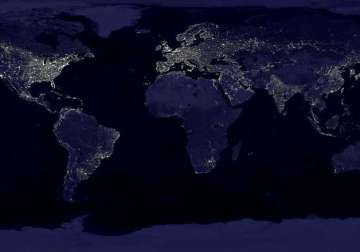London: Photos taken by astronauts aboard the International Space Station (ISS) have helped scientists reliably measure the amount of light pollution worldwide.
The study not only has the well-known signatures of cities and streets but also the effects of faint indirectly scattered light, which up to now had not been measured quantitatively.
The new results confirm that this diffuse glow, which is seen from space, is scattered light from streetlights and buildings.
This is the component responsible for the brightening of the night skies in and around cities, which drastically limits the visibility of faint stars and the Milky Way.
“Until the advent of new satellites, astronaut photography was our only colour and high-resolution window on the Earth,” said lead scientist Alejandro Sanchez de Miguel from the Universidad Complutense de Madrid, Spain.
The team that had researchers from Quebec-based Cegep de Sherbrooke college in Canada found that European countries and cities with a higher public debt also have higher energy consumption for street lighting per inhabitant.
The total cost of the energy consumption for street lights is 6,300 million euros per year in the European Union, said the researchers in a project called “Cities at Night”.
Starting in July 2014, this huge project required the cataloguing of over 130,000 images—the ISS's entire high-resolution archive—and geo-referencing them to place them on a map.
The images were also calibrated using the stars in the background sky over the ISS, as well as ground-based measurements of the night sky brightness.
The aim is to produce a global colour map of the Earth at night from pictures taken by the ISS astronauts using a standard digital camera.
“The next phase of the project aims to gather funding to keep the project running, so it can extend its colour map of the nightside of the Earth,” the scientists noted.
Latest World News
